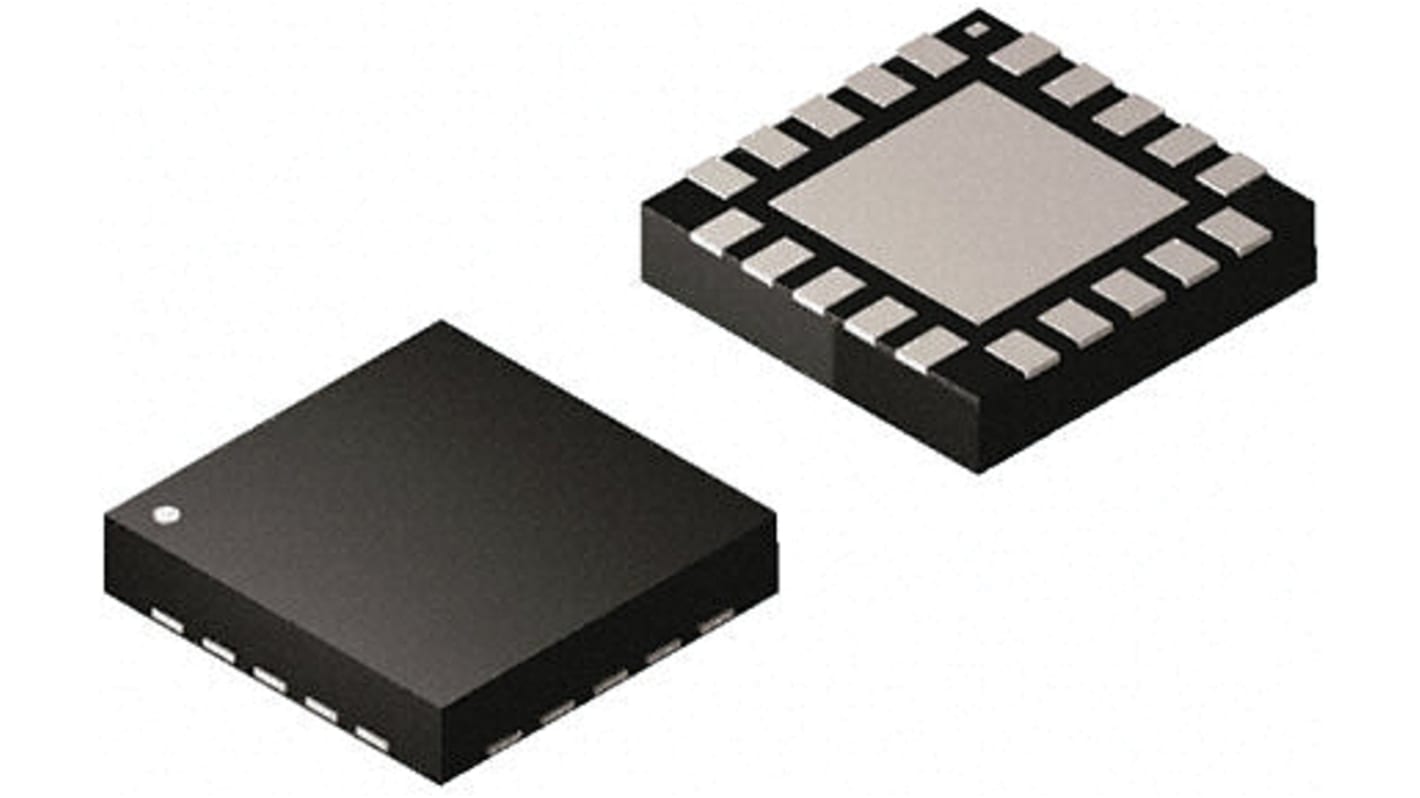Silicon Labs, 8 bit CIP-51, EFM8SB1 Microcontroller, 25 MHz, 8kB FLASH, 20-Pin QFN
- RS Stock No.:
- 865-6294P
- Mfr. Part No.:
- EFM8SB10F8G-A-QFN20
- Brand:
- Silicon Labs

Subtotal 100 units (supplied in a tube)*
£80.60
(exc. VAT)
£96.70
(inc. VAT)
FREE delivery for orders over £50.00
- Shipping from 27 October 2026
Units | Per unit |
|---|---|
| 100 - 380 | £0.806 |
| 400 - 980 | £0.745 |
| 1000 + | £0.727 |
*price indicative
- RS Stock No.:
- 865-6294P
- Mfr. Part No.:
- EFM8SB10F8G-A-QFN20
- Brand:
- Silicon Labs
Select all | Attribute | Value |
|---|---|---|
| Brand | Silicon Labs | |
| Series | EFM8SB1 | |
| Product Type | Microcontroller | |
| Package Type | QFN | |
| Mount Type | Surface | |
| Pin Count | 20 | |
| Device Core | CIP-51 | |
| Data Bus Width | 8bit | |
| Program Memory Size | 8kB | |
| Maximum Clock Frequency | 25MHz | |
| RAM Size | 512bit | |
| Maximum Supply Voltage | 5.5V | |
| Maximum Expanded Memory Size | 256bit | |
| Maximum Power Dissipation Pd | 1W | |
| Analogue Comparators | 1 | |
| Minimum Operating Temperature | -40°C | |
| Number of Programmable I/Os | 28 | |
| Maximum Operating Temperature | 85°C | |
| Width | 3 mm | |
| Height | 0.55mm | |
| Length | 3mm | |
| Standards/Approvals | RoHS | |
| Minimum Supply Voltage | 1.8V | |
| Program Memory Type | FLASH | |
| ADCs | 9 x 12 Bit | |
| Instruction Set Architecture | MCU | |
| Automotive Standard | AEC-Q100 | |
| Number of Timers | 4 | |
| Select all | ||
|---|---|---|
Brand Silicon Labs | ||
Series EFM8SB1 | ||
Product Type Microcontroller | ||
Package Type QFN | ||
Mount Type Surface | ||
Pin Count 20 | ||
Device Core CIP-51 | ||
Data Bus Width 8bit | ||
Program Memory Size 8kB | ||
Maximum Clock Frequency 25MHz | ||
RAM Size 512bit | ||
Maximum Supply Voltage 5.5V | ||
Maximum Expanded Memory Size 256bit | ||
Maximum Power Dissipation Pd 1W | ||
Analogue Comparators 1 | ||
Minimum Operating Temperature -40°C | ||
Number of Programmable I/Os 28 | ||
Maximum Operating Temperature 85°C | ||
Width 3 mm | ||
Height 0.55mm | ||
Length 3mm | ||
Standards/Approvals RoHS | ||
Minimum Supply Voltage 1.8V | ||
Program Memory Type FLASH | ||
ADCs 9 x 12 Bit | ||
Instruction Set Architecture MCU | ||
Automotive Standard AEC-Q100 | ||
Number of Timers 4 | ||
